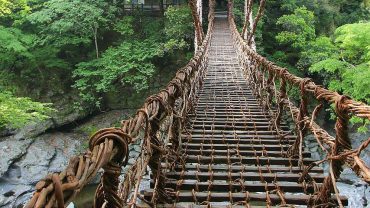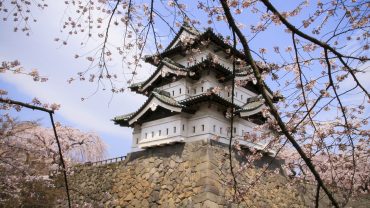TOKYO – JAPAN
Tokyo is Japan’s capital and the world’s most populous metropolis, is also one of Japan’s 47 prefectures, consisting of 23 central city wards and multiple cities, towns and villages west of the city center. Tokyo offers a seemingly unlimited choice of shopping, entertainment, culture and dining to its visitors. The city’s history can be appreciated in districts such as Asakusa and in many excellent museums, historic temples and gardens. Contrary to common perception, Tokyo also offers a number of attractive green spaces in the city center and within relatively short train rides at its outskirts.

Art & Culture
In Tokyo you can experience the whole breadth of Japanese arts and culture. Centuries-old forms of performing arts still play on stages and sumo tournaments draw crowds; every spring, Tokyoites head outside to appreciate the cherry blossoms – a tradition older than the city itself. There are museums covering every era of Japanese art history and also ones that focus on the contemporary – challenging the old distinctions between art with a capital A, pop culture and technology. But there’s a playful side to all of this, too: Tokyo is, after all, a city whose public artworks include a scale model of an anime robot.

Tokyo’s Food Scene
When it comes to Tokyo superlatives, the city’s food scene tops the list. But we’re not just talking about the famous restaurants and the celebrity chefs: what Tokyo excels at is consistency across the board. Wherever you are, you’re usually within 100m of a good, if not great, restaurant. It’s a scene that careens nonchalantly between the highs and lows: it’s not unusual for a top-class sushi restaurant to share the same block as an oil-spattered noodle joint, and for both to be equally adored. Tokyoites love dining out; join them, and delight in the sheer variety of tastes and experiences the city has to offer.
Tokyo free guide
One day Tour
TFG provides a guided tour in Tokyo or its vicinity for a half or full day. There is no guiding fee for this volunteer service. However, the costs of the guide during the tour such as transportation fares, entrance fees and meals are payed by the guests. Usually TFG guided tours begin at the guest’s hotel or accommodation. TFG volunteer guides speak English, and some can speak Spanish, Italian and other languages.
TFG welcomes both individuals and group of up to six (6) people. Guests can request a guide for a tour on several different days within two(2) months in advance of the requested dates.
Please note that TFG cannot fulfill all the requests we received due to seasonal demands and the availability of volunteer guides. TFG was able to provide a guide for 60% of requests in 2018.
To register, please fill out the form. You will receive an email from a guide when one comes available. Click here or click the above photo!

Getting to Tokyo
Tokyo is served by 2 airports that both service international flights:
- Narita International Airport (NRT)
- Haneda Airport (HND).
Haneda is closer and more convenient to the city but has fewer international connections.
Narita International Airport (NRT) : is about 60 kilometers northeast of Tokyo, which is further away than Haneda. However, this is the city’s main international airport, and most international flights to Tokyo will use Narita. It’s likely this is the airport where you will arrive.
Traveling from the Airport to the City
Narita Express : The Narita Express runs between Narita and Tokyo Station. Some trains also start/stop at other stations on the JR Yamanote Line, including Shinagawa and Shinjuku. The trip between Narita and Tokyo Station costs around 3,000 JPY and takes 65 minutes. Trains typically leave every 30 minutes. All seats are reserved; you can activate a Japan Rail Pass and/or make reservations at the JR counters at Narita. For more information, visit their website.
Keisei Skyliner : This is a good option only if you are staying near Ueno. It runs between Narita and Ueno, which is on the JR Yamanote Line. The trip between Narita and Ueno costs 2,470 JPY and takes about 40 minutes. For more information regarding timetables, visit their website.
Tokyo Airport Bus : Airport limousine buses run between Haneda and various points in Tokyo. The trip costs 3,100 JPY and takes between 85 and 110 minutes, depending upon the pick-up/drop-off point in Tokyo. At Narita, the boarding point is at the bus stops on ground floor. The main benefit will be a drop-off directly at your hotel. For more information, visit the limousine website.
Taxi : are not typically a good option considering the time and expense it will take you to get into Tokyo. A regular taxi will cost about 21,000 JPY and take around 65-85 minutes, depending upon destination and traffic. You can also reserve a fixed-fare cab in advance at MK Taxi, but it will still run you about the same price.
Emergency Contacts in Tokyo
- To report an accident or a crime, call 110 or locate the closest police box (Koban).
- To report a fire or ask for an ambulance or rescue services, contact the nearest fire station at 119.
- Emergency telephone numbers can be called from home phones, mobile phones, and public phones. When making an emergency call from a public phone, neither money nor a pre-paid telephone card is necessary.
Keep Safe in the City
- Pickpockets and thieves operate all over the world; be aware of your surroundings.
- If you are walking along the street, keep valuables on your other side. Thieves in cars and motorcycles have been known to grab purses and bags from pedestrians.
- Never accept drinks from strangers, and always keep yours with you in crowded bars. This is especially important to keep in mind in the nightlife districts of Tokyo, Roppongi, and Kabuki-cho.
- Avoid deserted areas, especially at night.
- Remember that possession or use of illegal drugs (including marijuana) are both serious crimes in Japan. Convictions for drug offenses result in lengthy sentences.
Visiting Public Places
- Never leave your bags unattended.
- During peak times, the subway can be very crowded. If you can’t avoid travel during these times, be aware of your bags at all times. In addition, there are women-only subway cars available to use (usually the last train car).
- If you’ve left your belongings on a train, ask a station attendant for help. It makes the search easier if you remember the destination of the train and the train car you were on.
- If you’ve left your belongings on a bus or taxi, contact (or have your hotel contact) a local service office of the bus company or the taxi company.
At Your Hotel
- Always keep your passports and other valuables in a locked room safe if available.
- Hotels are open to the public, and at large properties security may not be able to screen everyone entering. Always lock your room door. Don’t assume that once inside your hotel you’re automatically safe.
Getting Around Tokyo
Tokyo is a huge sprawling city, but it’s served by one of the world’s best public transportation systems.
1. By Public Transportation
Tokyo’s subways and trains are the best way to get around Tokyo. Stops are frequent, and the vast majority of tourist sites can be accessed via these systems. Rides typically cost a few dollars, but will vary by distance. Here is a map of the stations serviced. Don’t worry about scheduling your trip too much, though — Tokyo’s rail system is typically on time and stops are frequent. Please refer to HyperDia for operating hours. While you can buy individual tickets, the easiest and best way to use Tokyo’s subways and train is with a Pasmo or Suica card. These can be bought at many train/subway stations or convenience stores. You simply swipe the card over the reader when entering and leaving the system. The fare will automatically be deducted from your card, and the machine will show the remaining balance. It’s also easy to top up your balance at the automated kiosks.
Note: Avoid riding subways and trains during rush hours (7:30-9:30 am and 5:00-8:00 pm), or be prepared to squeeze in!
2. By Taxi
Tokyo’s taxis are an excellent way to get around the city, especially outside of rush hour or if you have to go somewhere that’s not close to a train or subway station. However, be aware that they’re not cheap: fares start around $4.
3. By Bus
Tokyo’s buses are extensive and efficient, but they’re not ideal for tourists. If you do use them, note that the same Pasmo or Suica cards can be used for rides. For more information regarding fares and schedules, visit the Toei Bus website.

With these phrases, you’ll be able to navigate many simple interactions in Tokyo!
More information: https://upgradedpoints.com/tokyo-travel-guide
by Tokyo guide





Comment (0)